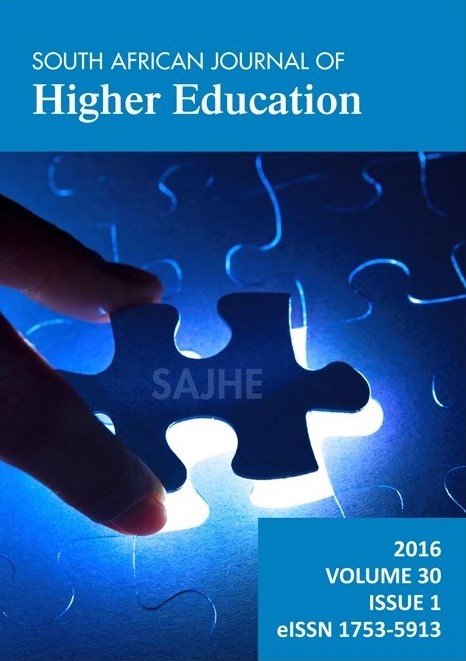Student experiences of Microteaching: promoting Reproductive or Innovative Learning
DOI:
https://doi.org/10.20853/30-1-549Abstract
Work-integrated learning (WIL) provides a framework for pre-service student teachers to prepare for professional practice. According to the Department of Higher Education’s policy on the Minimum requirements for Teacher Education Qualification (2011), student teachers are to acquire tacit knowledge and skills which are essential components of learning to teach. Practical learning is a form of learning ‘in and from’ practice. Microteaching is often adopted as a strategy to initiate pre-service students into the practical world of teaching. Learning ‘in practice’ involves teaching in authentic and simulated environments. Informed by the research question: ‘what are first-year students learning experiences in a microteaching programme?’, this paper evaluates pre-service students’ experiences of a microteaching programme. First year students’ evaluation forms, document analysis and participant observation were used to provide data for this study. Student evaluation forms were analysed and coded on the basis of common usage of expressions, phrases and ideas. Patterns of meaning were identified and extracted from the data. Goffman’s notion of ‘frames’ was used as analytical lens to illuminate student involvement. This article argues that multiple interactive frames that operate during microteaching often let the student diminish as main focus which compromises the objective of microteaching: to provide pre-service students learning opportunities in a simulated and unthreatening environment. Despite the lack of explicit objectives and contradictory student experiences, this article further argues that microteaching presents students with numerous opportunities for learning. Given the close link between microteaching and the all-pervasive 21st century technological teaching environment, microteaching is poised for a new wave of popularity. To achieve the objectives of a microteaching programme, it should intractably be student-centered. The student should be maintained as main focus and beneficiary. To this end, recommendations are made.Downloads
Downloads
Published
How to Cite
Issue
Section
License
This journal is an open access journal, and the authors and journal should be properly acknowledged, when works are cited.
Authors, copyright holders, may use the publishers version for teaching purposes, in books, theses, dissertations, conferences and conference papers.
A copy of the authors' publishers version may also be hosted on the following websites:
- Non-commercial personal homepage or blog.
- Institutional webpage.
- Authors Institutional Repository.
The following notice should accompany such a posting on the website: This is an electronic version of an article published in SAJHE, Volume XXX, number XXX, pages XXX “XXX", DOI. Authors should also supply a hyperlink to the original paper or indicate where the original paper (http://www.journals.ac.za/index.php/SAJHE) may be found.
Authors publishers version, affiliated with the Stellenbosch University will be automatically deposited in the University Institutional Repository SUNScholar.
Articles as a whole, may not be re-published with another journal.
The following license applies:
Attribution CC BY-NC-ND 4.0





